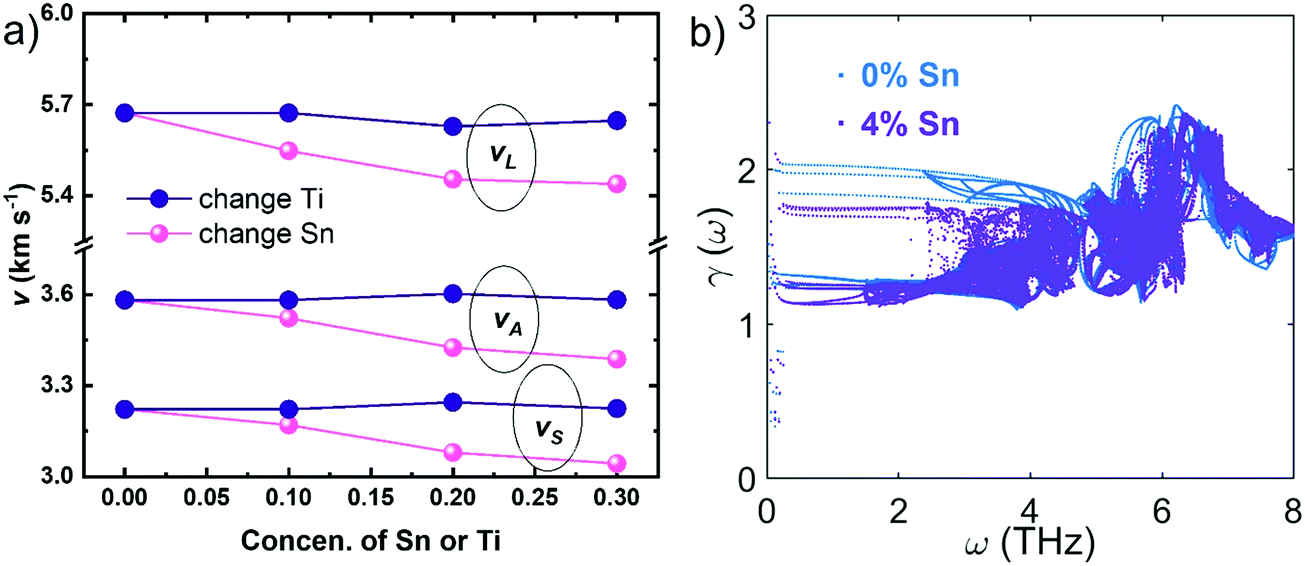

(12) Other reliable half-Heusler TE materials are from the family of FeMSb-related (M = Nb and Ti) compounds with large ZT values of 1.1–1.5. (11) Studies on doped-(Ti, Zr, or Hf)NiSn compounds show that the doping of Sb instead of Sn remarkably reduces the electrical resistivity and hence enhances ZT to 1.5 at 700 K. (10) In n-type Hf 0.6Zr 0.4NiSn 0.995Sb 0.005 alloys, an even higher ZT value of 1.2 has been obtained at 900 K. The ZT in HfNiSn is enhanced up to 1.0 by doping Zr and Sb for the substitution of Hf and Sn, respectively. (8,9) In recent years, considerable effort has be made to enhance the TE efficiency of the half-Heusler semiconductors by isoelectronic doping. (5−7) Good pristine half-Heusler compounds such as TiCoSb and ZrNiSn hold large ZT values in the range of 0.015–0.3. (4) Until now, the most studied half-Heusler TE compounds are the MNiSn- and MCoSb-related (M = Ti, Zr, and Hf) compounds. (2) On the other hand, ternary half-Heusler alloys can be easily synthesized into 100% dense samples, (3) and their TE efficiency can be further improved by isoelectronic alloying. Ternary half-Heusler alloys, with a valence electron count of 18, have been recently studied as promising candidates for TE materials due to the narrow band gap, large Seebeck coefficient, moderate electrical conductivity, good mechanical properties, and thermal stability. Therefore, a strategy for achieving a higher ZT value is to search for TE materials with a sharp slope of DOS near the band gap. A sharp slope of density of states (DOS) near the band gap always gives a large effective mass and therefore a high Seebeck coefficient. As a result, the power factor can be optimized by enhancing m* with slightly reducing μ. The behavior of m* and μ can be characterized by μ = eτ/ m*. The figure of merit for a given TE material is proportional to ( m*) 3/2μ, in which m* and μ are, respectively, the effective mass and carrier mobility. Due to the interdependency of these transport coefficients ( S, σ, and κ e), it is a great challenge to enhance the value of ZT. Unfortunately, the Seebeck coefficient and electrical conductivity are commonly anticorrelated and a large electrical conductivity corresponds to a large electronic thermal conductivity, thus causing the reduction of ZT. An ideal TE material should have a large power factor defined as PF = S 2σ, a low thermal conductivity (κ = κ e + κ l), and hence a high ZT. κ e (κ l) is the thermal conductivity contributed by electrons (phonons). (1) Here, S, σ, and T are the Seebeck coefficient, electrical conductivity, and absolute temperature, respectively. The conversion efficiency of TE materials is characterized by the dimensionless figure of merit ZT = S 2σ T/(κ e + κ l). Thermoelectric (TE) materials, which can convert heat to electricity and vice versa, have been extensively studied for their promising applications in both electric power generation and cooling during the past decades. Our work opens up new avenues for rationally searching better TE materials among half-Heusler alloys for applications in fields requiring efficient thermoelectricity. The highest maximum power factor of 5.152 mW m –1 K –2 and figure of merit of 0.309 are predicted for pristine half-Heusler NiVIn, which are larger than the values of some known pristine and doped half-Heusler TE materials. Further investigation on carrier concentration and temperature dependence of TE properties shows the high power factors of NiVAl, NiVGa, and NiVIn, which are responsible for their high figure of merit values. Among them, NiVAl, NiVGa, and NiVIn exhibit a sharp slope of density of states near the Fermi level, which is predicted to be essential for a high TE performance. The electronic structure calculations indicate the existence of direct energy gaps in the NiVZ (Z = Al, Ga, and In) and indirect energy gaps in the NiTiZ (Z = Si, Ge, and Sn) and NiScZ (Z = P, As, and Sb) compounds. Their mechanical and dynamical stabilities are verified based on the calculated elastic constants and phonon spectra. Using a high-throughput search method based on first-principles calculations in newly proposed 378 half-Heusler alloys, we identify nine nickel-based half-Heusler semiconductors as candidates and systematically study their mechanical, electronic, and transport properties. Therefore, search for better parent TE compounds is deemed urgent. Although the conversion efficiency of these materials can be greatly improved by doping, it is still far away from the real-life applications. Half-Heusler alloys have recently received extensive attention because of their promising thermoelectric (TE) properties and great potential for applications requiring efficient thermoelectricity.


 0 kommentar(er)
0 kommentar(er)
